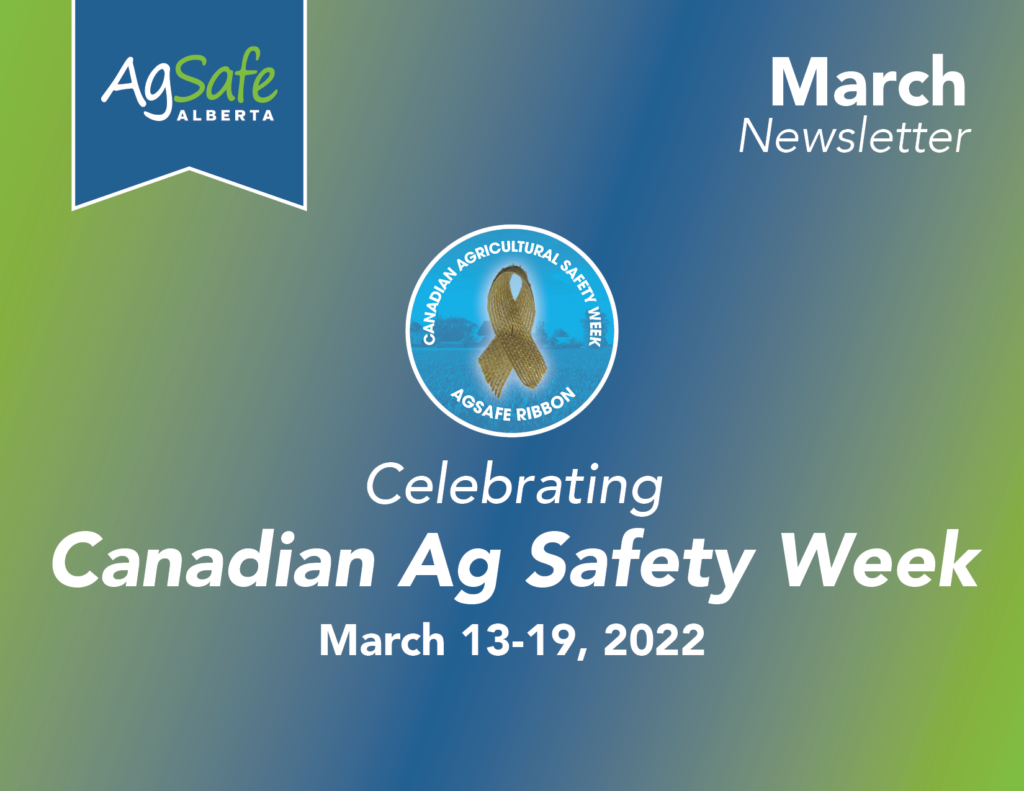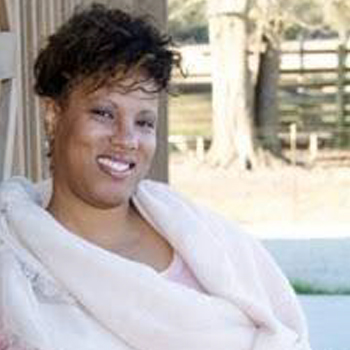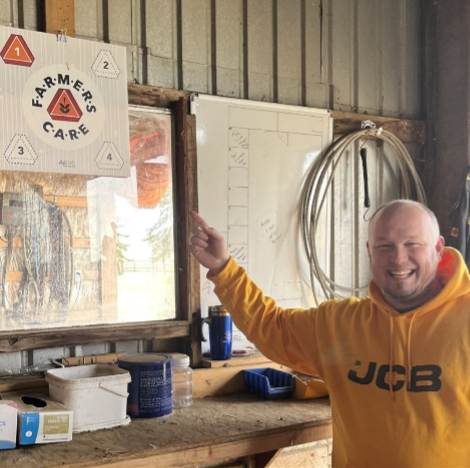
It Happened to One of Us
2021 Incident Summary
(Incident source: Alberta Occupational Health and Safety)
| Description | Injury Type | Age Range | Sector | WCB Code |
| Crushed by falling hay bale | Serious injury | Not Confirmed | Feed Lots | 01201 |
| Crushed by falling hay bale | Serious injury | 20 to 29 Years | Hay/Grain/ Crop Farming | 01600 |
- Hay bales can vary drastically in weight; a small light square bale could weigh as little as 40 lbs, where a large, dense round bale could weigh over 3,000 lbs!
- A single bale weighing 40 lbs falling 10 feet could be fatal.
CLICK HERE TO CONTACT US AT INFO@AGSAFEAB.CA
WE CAN ANSWER QUESTIONS, OFFER SUPPORT,
AND PROVIDE YOU WITH RESOURCES THAT WILL
MAKE SAFETY ON YOUR FARM PRACTICAL AND ACHIEVABLE.
Female Farmer & Farm Worker Health
Whether it is pulling calves, running the cutter, or taking over the family farm, women are more active than ever in agriculture! While this is wonderful, we need to remember that girls and women can also face some under-recognized risks in terms of fertility, pregnancy and other illnesses. Veterinary drugs, pesticides, zoonotic disease and heavy lifting are just a few things that should be considered when work being is done. Click on the links below for information and resources to help you better understand and control these types of risks.
Fatigue is a State of Impairment
As we enter another growing season, many of us are going to be putting in some very long, hard workdays while operating extremely large, noisy and potentially dangerous equipment; in other industries, this type of work would be considered safety sensitive – where an incident could result in serious injury the person performing it or someone else.
We need to recognize that fatigue is a state of impairment. It reduces your alertness, your concentration, your reaction time, and is a common yet unrecognized hazard on farms and ranches. Like all hazards, once you recognize them, you can then assess them and do something to minimize the risk. Take a few moments to check out the links below and think about how your operation can better manage fatigue.
GROWING FARM SAFETY WEBINAR SERIES
REDUCING THE RISK OF ADVERSE PREGNANCY OUTCOMES AND PERINATAL ILLNESS FOR FEMALE AG. PRODUCERS
When: March 8, 2022
Time: 1 p.m.
Presented by:
Knesha Rose-Davison
MPH, Public Health Program Director

WAKING UP TO FATIGUE FACTORS ON THE FARM
When: March 22, 2022
Time: 1 p.m.
Presented by:
Kimberley Hobbs
Vice President, In-Scope Solutions

Learning to Recognize Fatigue
The Epworth Sleepiness Scale (ESS) is a short, simple questionnaire used to measure daytime sleepiness. It was developed by Dr Murray Johns of Epworth Hospital in Melbourne, Australia in 1991 and has become a globally recognized tool since that time.
The questionnaire asks you to rate your likelihood of falling asleep in a common situation on a scale ranging from 0 to 3. The scores are then added together and can help you assess whether you need to slow down and get more sleep, make some changes in lifestyle and sleep practices, or even seek medical attention to address the issue.
Click here to find out how sleepy you are.

Congratulations!
Congratulations to Ryan Greir and Whispering Cedars Ranch on completing FARMERS CARE Level 1!
AgSafe Alberta loves hearing from producers. Ryan, thank you so much for your kind words about the FARMERS CARE program on social media and for tagging us in your post!
SAFETY FIRST, LAST THOUGHTS
Changing Your Approach to the Time Change
Losing one hour of rest might not seem like much, but everyone’s body is unique and sometimes it can affect us in ways we might not recognize. Where one person may not notice any effects from the time change, someone else could find themselves short on sleep not only the day after, but in the days following the time change as well. This results in what is called sleep debt, the accumulating (growing) effect of not getting enough quality sleep.
- Avoid performing critical or safety sensitive on Monday, March 14, 2022, and if possible, for a few days after that.
- Try gradually moving your bedtime up by a few minutes each day leading up to the time change.
Try gradually moving your waking time by a few minutes each day leading up to the time change. - Talk to your employees about the time change in advance; identify things you can all do together make the transition easier and safer, for example:
- Consider offering a degree of flexibility with regards to start times during the week; just because Monday morning started well, it doesn’t mean an extra 15 minutes to get to work on Tuesday couldn’t potentially prevent an already tired worker from speeding to get to work on time.
- Make a point of checking on workers frequently throughout the days following the time change, watch yawning, slow reaction times, poor decision making, etc.
- Treat everyone to a fatigue fighting breakfast that will provide an energy boost and avoid a crash like processed foods can cause; veggie omelettes or almonds and bananas with naturally flavoured water are great options!
CONTACT US
For general inquiries: info@agasafeab.ca /403-219-
For our hotline for incidence assistance: 1-833-9AGSAFE

